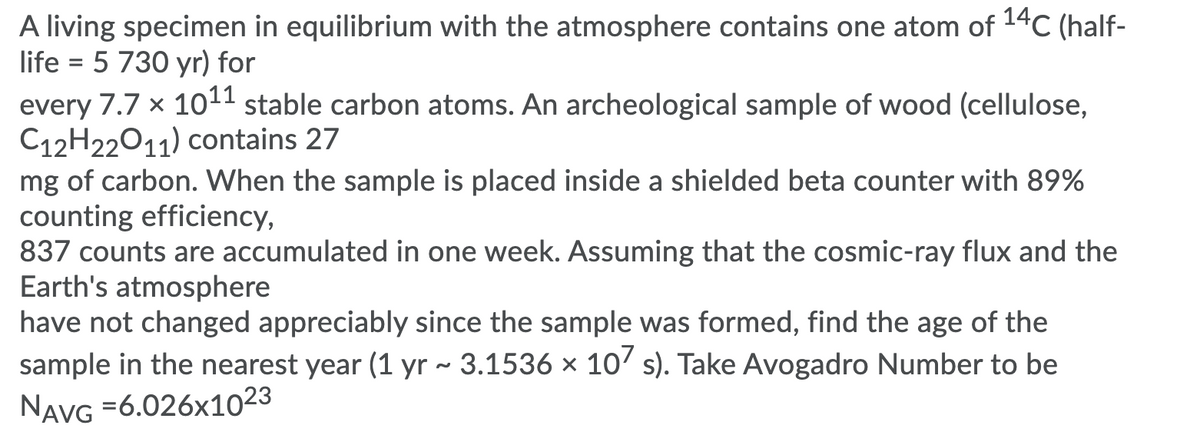A living specimen in equilibrium with the atmosphere contains one atom of 14C (half- life = 5 730 yr) for every 7.7 x 101" stable carbon atoms. An archeological sample of wood (cellulose, C12H22011) contains 27 mg of carbon. When the sample is placed inside a shielded beta counter with 89% counting efficiency, 837 counts are accumulated in one week. Assuming that the cosmic-ray flux and the Earth's atmosphere have not changed appreciably since the sample was formed, find the age of the sample in the nearest year (1 yr ~ 3.1536 x 10ʻ s). Take Avogadro Number to be NAVG =6.026x1o23
Radioactive decay
The emission of energy to produce ionizing radiation is known as radioactive decay. Alpha, beta particles, and gamma rays are examples of ionizing radiation that could be released. Radioactive decay happens in radionuclides, which are imbalanced atoms. This periodic table's elements come in a variety of shapes and sizes. Several of these kinds are stable like nitrogen-14, hydrogen-2, and potassium-40, whereas others are not like uranium-238. In nature, one of the most stable phases of an element is usually the most prevalent. Every element, meanwhile, has an unstable state. Unstable variants are radioactive and release ionizing radiation. Certain elements, including uranium, have no stable forms and are constantly radioactive. Radionuclides are elements that release ionizing radiation.
Artificial Radioactivity
The radioactivity can be simply referred to as particle emission from nuclei due to the nuclear instability. There are different types of radiation such as alpha, beta and gamma radiation. Along with these there are different types of decay as well.
IF YOU GET 14700 as an answer IT IS WRONG

Step by step
Solved in 2 steps with 1 images









